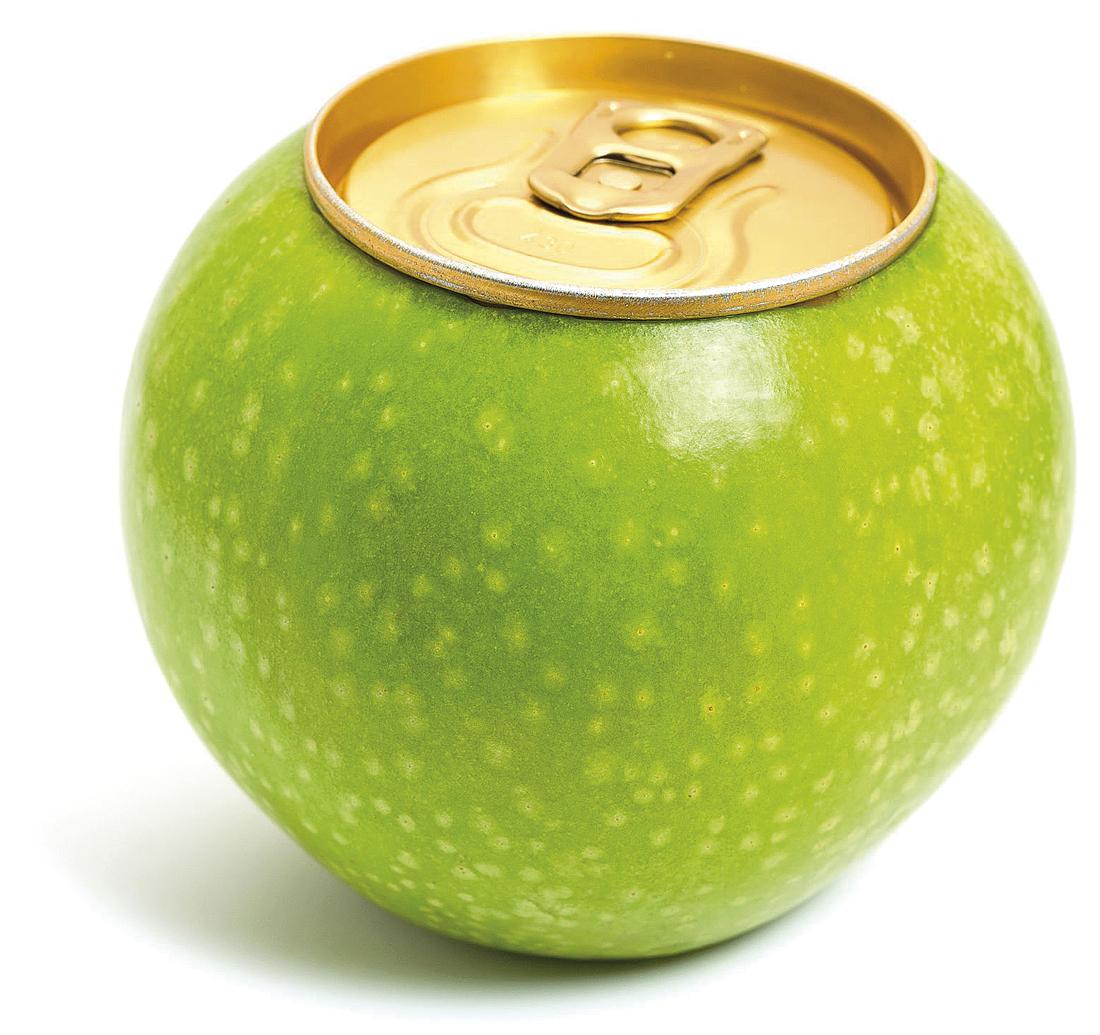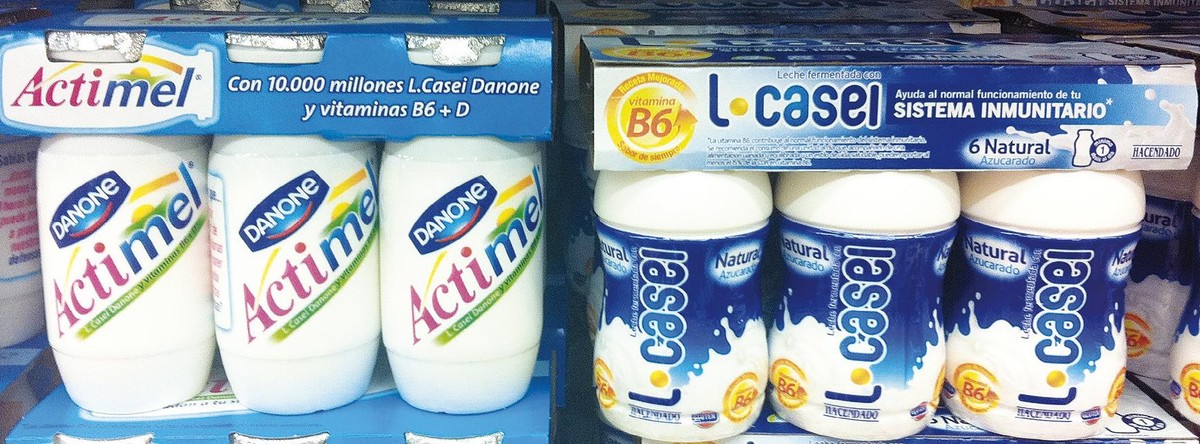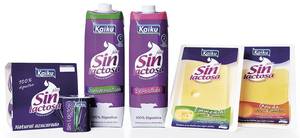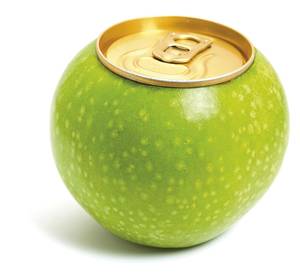Functional components in diffuse limits
2013/05/01 Galarraga Aiestaran, Ana - Elhuyar Zientzia Iturria: Elhuyar aldizkaria

"The new regulation has killed research and development." This phrase was launched by researcher José Manuel López Nicolás in a day on functional components. In March, the Gaiker-IK4 Research Centre organized this day under the title "Functional components in the food and cosmetics sectors: Under the title "status quo and future strategies," López Nicolás was the first speaker.
Researcher and professor of Biochemistry and Enzymatic Biotechnology at the University of Murcia, he is known above all for being author of the blog Scientia. In any case, he knows very well the research, the market and the regulations on functional foods and, both in the day and in the blog, he explained that the new regulation has not complied with the forecasts and needs of those involved, which has direct consequences in the research, the producers, the market and the consumers.
In fact, in the new regulation (Regulation 432/2012), the EFSA regulates health-related claims that appear on food labels, in particular those that indicate that they reduce the risk of suffering certain diseases and those related to the development and health of children.
In fact, consumer defense associations have been denouncing for years that labeling regulations were not strict enough and that almost anything could be read without knowing if it had a scientific basis: it strengthened the immune system or bones, intensified brain activity, helped to maintain an adequate level of cholesterol in blood or to go to the bathroom with some frequency, etc.
Therefore, the legislation that entered into force last year had the objective of clarifying all this. The professor of Constitutional Law, Leire Escajedo, who participated in the day, considers that with this the European Union has not reached the objective: "Ten years have passed working on the drafting of the regulations and will not be fully developed until 2022. And in practice it has caused problems to producers, consumers and the EFSA itself."
Slot for tricks
The attendees of the day coincided with Escajedo. For example, researcher López Nicolás warned that the regulations do not affect the final product but the components. "And there's the spoon, which allows producers to introduce statements on the labels they couldn't put before." Sample of this is the case of yoghurts containing L. casei.

The best known are the Actimel, of the company Danone. In fact, Danone claimed that these yoghurts improved the immune system. In label and advertising he explained that Actimel yoghurts were so beneficial and healthy thanks to the strain L. casei DN-114.001, developed by himself.
In some places, however, consumer associations, supported by diverse scientists, denounced that this claim had no scientific guarantees and was fraudulent. Thus, the organization that regulates advertising in Britain (Advertising Standards Authority) forced Danone to withdraw such advertising and had to pay a fine of 16 million euros in the United States.
Little by little, and the EFSA did not give the approval to the studies presented by Danon in favor of his strain. As a result of all this, Danone had to remove the surname Imunitass that accompanied L. casei on the Actimel yogurt labels to the immune system.
This was the situation when EFSA launched a new labeling regulation. "In theory, the regulations should serve to clarify these kinds of things and to close the doors to fraud. But it has not been so, because it has left the producers a gap to invent new tricks," said López Nicolás.
He explained the trick with the label of the yoghurts of the white brand of Mercadona: "I have realized that in the yoghurts that carry L. casei the reference to the immune system reappears, specifically in the yoghurts of Mercadona (Hacendado), together with the words L. casei, it contributes to the normal functioning of the immune system; the same claim that has brought to Danone so many problems".
The same statement yes, but with an asterisk. "To realize you have to look at the label with the magnifying glass, but it is true that next to the affirmation there is a hidden medium asterisk." The asterisk directs the consumer to one side of the packaging, where there is a "miniscule" warning that vitamin B6 contributes to the normal functioning of the immune system.
"In that note is the key," said López Nicolás. The new EFSA regulation allows establishing that vitamin B6 contributes to the normal functioning of the immune system. And that's what Mercadona has taken advantage of, which has included vitamin B6 among its ingredients, which allows it to affirm without problems that yogurt benefits health for its influence on the immune system. "In fact, this effect is due to vitamin B6, but the producer hides that of vitamin and increases the size of the words L. casei to resemble Actimel yoghurts and differentiate itself from other yoghurts."
In addition to Mercadona, many other manufacturers use the same trick. Danone has introduced B6 and D among the ingredients of Actimel yogurts, allowing it to reaffirm that it is beneficial to the immune system. In addition to vitamin B6, EFSA recognizes the healthy effects of other vitamins and even minerals and, added to the ingredients, can make new demands on the labels. And they do them.
Therefore, López Nicolás does not hesitate: The EFSA regulations allow fraud. And in many cases, as it happens with yoghurts, consuming the product is not a special benefit, since with a balanced diet there is no risk of lack of these vitamins and minerals. López Nicolás himself has remembered that a simple banana has three times more vitamin B6 than one of these yoghurts.
Healthy non-functional
Some manufacturers have used to the extreme the opportunity that the regulations allow to make confusing predictions. For example, the company Florette brought functional salads ready to eat last summer. They are called Florette Digestiva, Cardio, Inmuno and Antiox and each one claims a health benefit. These benefits are based on the influence of the proper components of salads.
This generates confusion about the definition of functional food. In general, in order to obtain a health benefit, it is called functional foods that are added some ingredient (milk with omega 3 fatty acid), is sharpened (enriched in calcium in milk), is eliminated (without lactose), is replaced (fructose instead of glucose) or bioavailability is modified (for example, to reduce cholesterol).

In addition, to some extent, experts consider that with these tricks, it can also be understood that they violate the regulations. According to the regulations, "claims should not be false, ambiguous or fraudulent. They should not raise doubts about food security or nutritional convenience and should not promote their excessive consumption." It further states that it will not be able to affirm, suggest or understand that a balanced diet of all kinds cannot provide adequate amounts of nutrients.
On the other hand, the regulation has generated despair among researchers. The researchers who attended the conference on functional components joined the complaint of López Nicolás. In fact, in his opinion, "since the regulations allow to establish the desired declaration based on a list of allowed claims, the producer does not have to investigate in new products, and the one who investigates it does not have the possibility of differentiating itself from others".
He also gave examples: "If someone wants to put that their product is good for the nervous system, just add potassium or want to claim that phosphorus is beneficial for the development of children."
Moreover, in the list authorized by the regulations there is an element that allows to place eight claims, since it is good for a correct coagulation of the blood, for the normal functioning of the energy metabolism, for the proper functioning of the muscle, for the proper functioning of the neurotransmission, for the proper functioning of the digestive enzymes, for the separation and cell separation, and for the maintenance of bones and teeth. It is calcium.
However, the researchers showed the hope that the situation will change, including José Ramón Iglesias, from the dairy company Central Lechera Asturiana. In his opinion, to claim health benefits "it is essential to comply with scientific criteria"; otherwise, regulations are useless.
On the other hand, he stressed the need to request this benefit to the product: "It is not enough that one of the ingredients is bioactive, but it must be guaranteed that, mixed with the rest of the food ingredients and consumed as consumed, it is still effective." Therefore, Iglesias gave some indications to improve the regulations.
In beauty products even more vago
In the day of functional components also participated producers and researchers of beauty products, who affirm that the mixture is even greater in its field. This is what Noemi Serra, director of R&D in dermatology at the Leti laboratories, says: "The laws are nothing accurate and leave much room for almost anything."
However, Serra acknowledged that the composition of beauty products is more complex than that of food, which hinders the creation of a unified and complete regulation: "In Beauty there are 23,000 ingredients and in a formulation they are used about 40".
Among the weaknesses of the current regulations, Serra highlighted three. On the one hand, the definition of the cosmetic product itself, according to Serra, "half of the products do not comply because it is too restrictive". On the other hand, the lack of a joint interpretation of cosmetic claims is also an obstacle. Finally, the demonstration methods of efficacy are scarce and are insufficient to cover the current needs of laboratories.
This last point also coincided with Blanca Suárez, of Gaiker IK-4. Design and perform safety and efficiency tests for functional components and developing products, among others. He recalled that in these tests the use of animals is forbidden. Suarez accepted this ban, "but those who replace it have not yet been developed and authorized."
In any case, researchers continue to work to test the safety and effectiveness of the new components and products they develop. But they have to overcome many obstacles. It seems that in the field of beauty, as in food, it is so harmful to have an inadequate regulation as not having regulations.


Gai honi buruzko eduki gehiago
Elhuyarrek garatutako teknologia








